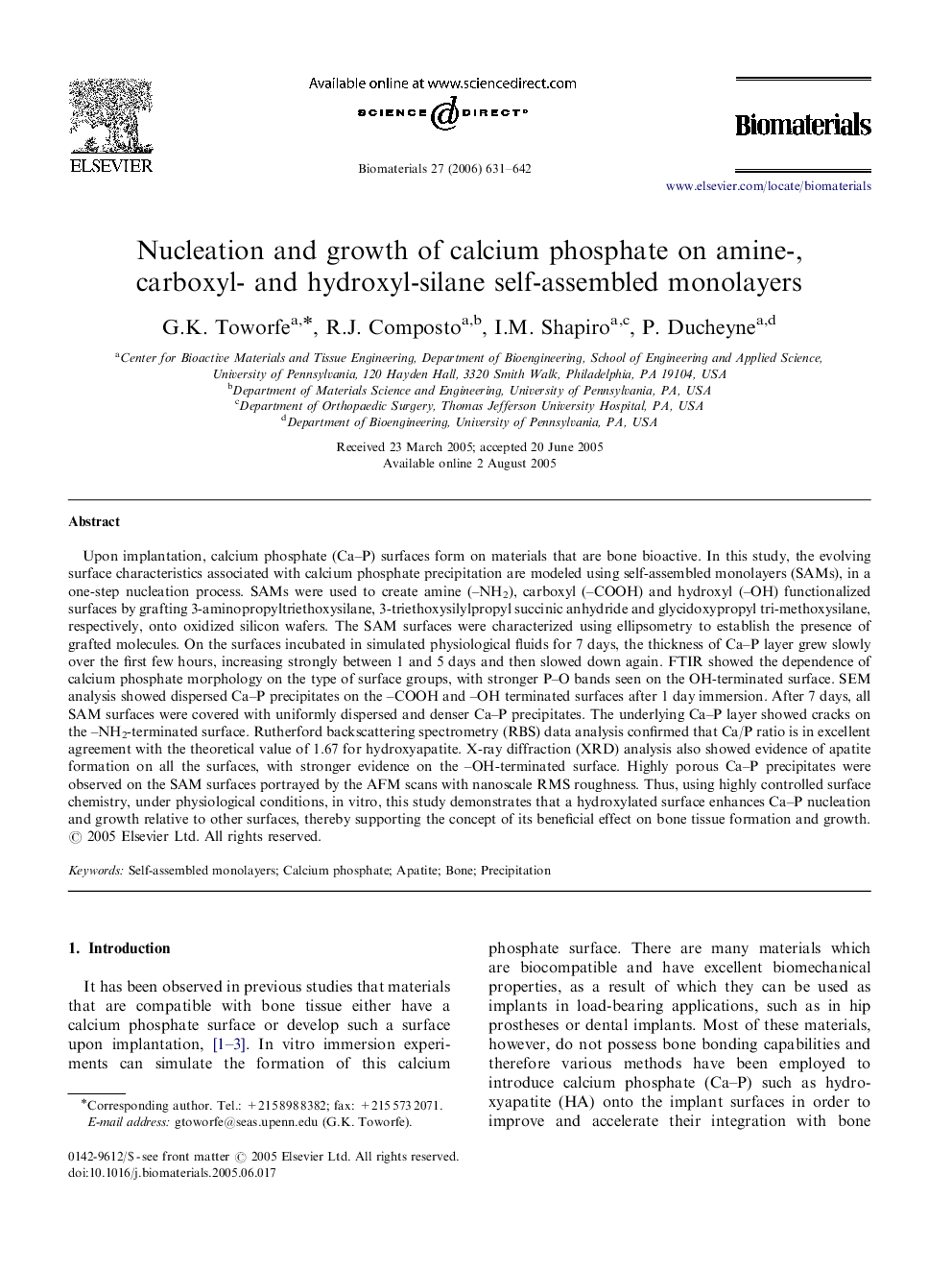| کد مقاله | کد نشریه | سال انتشار | مقاله انگلیسی | نسخه تمام متن |
|---|---|---|---|---|
| 11992 | 771 | 2006 | 12 صفحه PDF | دانلود رایگان |

Upon implantation, calcium phosphate (Ca–P) surfaces form on materials that are bone bioactive. In this study, the evolving surface characteristics associated with calcium phosphate precipitation are modeled using self-assembled monolayers (SAMs), in a one-step nucleation process. SAMs were used to create amine (–NH2), carboxyl (–COOH) and hydroxyl (–OH) functionalized surfaces by grafting 3-aminopropyltriethoxysilane, 3-triethoxysilylpropyl succinic anhydride and glycidoxypropyl tri-methoxysilane, respectively, onto oxidized silicon wafers. The SAM surfaces were characterized using ellipsometry to establish the presence of grafted molecules. On the surfaces incubated in simulated physiological fluids for 7 days, the thickness of Ca–P layer grew slowly over the first few hours, increasing strongly between 1 and 5 days and then slowed down again. FTIR showed the dependence of calcium phosphate morphology on the type of surface groups, with stronger P–O bands seen on the OH-terminated surface. SEM analysis showed dispersed Ca–P precipitates on the –COOH and –OH terminated surfaces after 1 day immersion. After 7 days, all SAM surfaces were covered with uniformly dispersed and denser Ca–P precipitates. The underlying Ca–P layer showed cracks on the –NH2-terminated surface. Rutherford backscattering spectrometry (RBS) data analysis confirmed that Ca/P ratio is in excellent agreement with the theoretical value of 1.67 for hydroxyapatite. X-ray diffraction (XRD) analysis also showed evidence of apatite formation on all the surfaces, with stronger evidence on the –OH-terminated surface. Highly porous Ca–P precipitates were observed on the SAM surfaces portrayed by the AFM scans with nanoscale RMS roughness. Thus, using highly controlled surface chemistry, under physiological conditions, in vitro, this study demonstrates that a hydroxylated surface enhances Ca–P nucleation and growth relative to other surfaces, thereby supporting the concept of its beneficial effect on bone tissue formation and growth.
Journal: Biomaterials - Volume 27, Issue 4, February 2006, Pages 631–642